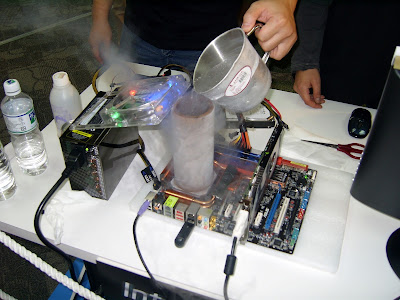If you've every had your head in the tech-world, you may have heard that AMD launched a new line of desktop CPUs earlier this year after 5 years of absence from the Central Processing Unit market; and there was much rejoicing among aficionados of Personal Computers. Why? There are several reasons why actually, and here's a short list of why you may want to consider siding with Team Red for your next computer build or upgrade...
1. Ryzen is easier on your Wallet
The current lineup of AMD Ryzen CPUs are offered at incredibly competitive prices ranging between $130 - $500, all the while having many of the same specifications and close to the same performance as Intel CPUs but undercutting Intel by about half the price in some cases. In fact here's a full list of the currently available chips with all of the specification and their current value: https://en.wikipedia.org/wiki/Zen_(microarchitecture)#Desktop_processors
2. Optimized for Multi-Tasking
If you're one for keeping open multiple tabs in your internet browser, having open multiple browsers or having open multiple programs simultaneously, a Ryzen CPU would be best chip for your workload. While Intel CPUs still reign king of single threaded performance, doing one or a few tasks best, AMD chips often outperform Intel in programs that allocates multiple CPU cores simultaneously. This is beneficial if you are a working professional using multiple programs, a content creator making graphic art, editing photography, mixing sound and music, editing videos or rendering CGI animations and effects. It's also beneficial to those running synthetic benchmarks, simulations and even game streaming and virtual reality.
In fact the video below is an apples to apples comparison between a AMD Ryzen chip and a similar Intel chip. (Spoilers: Intel's better at games, AMD's better at everything else. Often the same conclusion many other testers and reviewers have to say.)
3. Overclockable
Overclocking is the practice of dialing up the speed of your computer hardware, often at the cost of extra power, extra heat and less stability. But with the appropriate motherboard, power supply and CPU cooler, you can push your new Ryzen chip to outperform more than it's intended to be. AMD is practically the champion of overclocking with many of their chips holding world records in overclocked frequencies. See this website to see who the top contenders are: https://valid.x86.fr/records.html4. Better for the Free Market
AMD holds a reputation for being the underdog in the computer tech world. It doesn't help that AMD's annual research and development budget dwarfs in comparison to Intel's ($1.056 Billion, AMD vs $13.12 Billion, Intel) and with AMD's lack of a new CPU generation for the last 5 years has left Intel to run rampant, gaining them a favorable market share and allowed Intel to price their products at premium high prices without any major increments in better products over the years; giving Intel a near monopoly in the CPU market. At least until recently, with the release of Ryzen, AMD has gained back a cut of the market but Intel still holds dominance. But AMD isn't going down without a fight, as AMD is kicking up the competition with the announcement of a bigger Ryzen CPU with 16 cores, nicknamed "ThreadRipper". Needless to say, things in the CPU market are about to become a whole lot more interesting.












